Scratch one more item off the bucket list: the Maya ruins in Tulum. I booked another day trip from our resort in Cancun. With only two hours travel time each way, this excursion took far less time than Chichén Itzá and I was back at the resort in time for dinner. As per Mexican law, our tour group was limited to two hours onsite, which is nowhere near enough time for a proper visit. On the bus I met a lovely couple, Pascal and Martine, from Gaspé, Quebec and they became my travel companions for the day. This gave me a chance to brush up on my rusty French. I seldom get the chance to speak French and I welcomed the opportunity to get in some much needed practice.
All images are mine unless otherwise noted in the caption. Photo gallery at the end of this post.
A Brief History of Tulum
Tulum is the site of a pre-Columbian Mayan walled city which served as a major port for Coba, in the of Quintana Roo. It is located on 12-meter-tall (39 ft) cliffs along the east coast of the Yucatán Peninsula on the Caribbean Sea. The city had an had an estimated population of 1,000 to 1,600 inhabitants. The surrounding wall is three to 5 meters (16 ft) in height, 8 m (26 ft) thick and 400 m (1,300 ft) long on the western wall parallel to the sea.
Tulum was one of the last cities constructed by the Maya and achieved its apex between the 13th and 15 centuries. By that time the Mayan empire was in decline and the mixed architectural styles at Tulum suggests cultural influence by the Toltecs. Tulum flourished during the 14th century and was inhabited when the Spanish arrived in the early 16th century. The Maya continued to inhabit Tulum for about 70 years after the Spanish began occupying Mexico. The city was abandoned by the end of the 16th century.
From numerous depictions in murals and other works around the site, Tulum appears to have been an important site for the worship of Ah-Muzen-Cab, the Diving or Descending god. In Mayan mythology, Ah-Muzen-Cab is the god of bees and honey and there is a temple dedicated to him among the ruins.
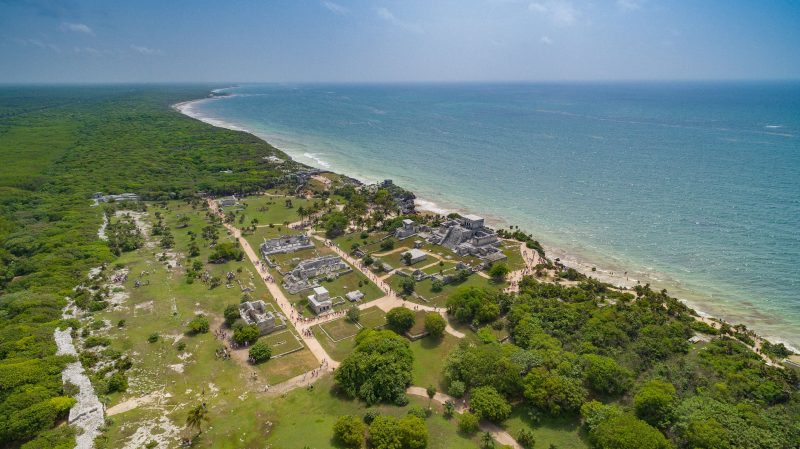
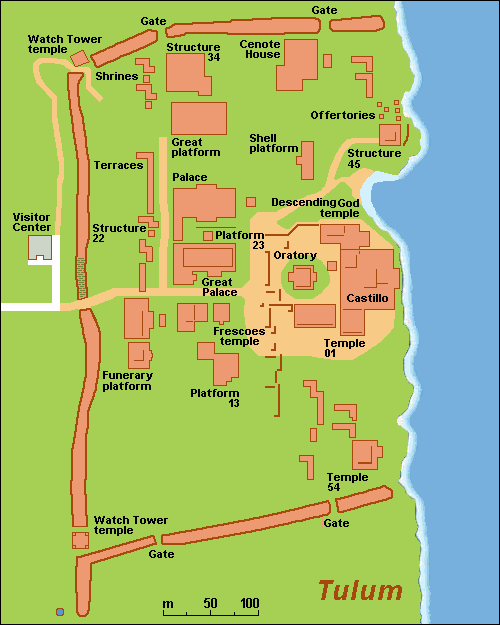
In the Yucatán Mayan language, Tulum literally means wall. However, the Mayans referred to the city as Zama, which translates to “dawn” and that makes sense given its eastern orientation. After the arrival of Spaniards to Mesoamerica, Tulum was first mentioned by Juan Díaz, a member of Juan de Grijalva’s Spanish expedition of 1518 and they were first Europeans to arrive at the site. In Juan de Reigosa’s Las Relaciones de Yucatan (Spain, 1579), Zama is mentioned as a walled site with stone buildings, including a large structure that resembles a fortress (most likely El Castillo). Pedro Sanchez de Aguilar, author of Informe Contra Idolorum Cultores del Obispado de Yucatan, (Madrid, 1639) mentions the coast of Zama when telling the story of ten shipwrecked Spaniards who were taken prisoner by the Chieftain Kenich. Among them was Geronimo de Aguilar, who later became Hernan Cortes’ interpreter during the Conquest of Mexico.
The first detailed description of the ruins was published by American and English explorers John Lloyd Stephens and Frederick Catherwood in their book Incidents of Travel in Yucatan (1843). They made accurate maps of the site’s walls and Catherwood made detailed sketches of the Castillo and several other buildings. They named the site Tulum in 1841. It should be noted that Stephens and Catherwood were not the first Europeans to rediscover Tulum. After 1639, there were no other written references to Tulum until Juan Pio Perez in a letter dated 1840 stated that Juan Jose Galvez had visited Ascencion Bay, discovering that between there and Cape Catoche were two ancient cities, Tankah (located about 15 minutes north) and the walled city of Tulum.
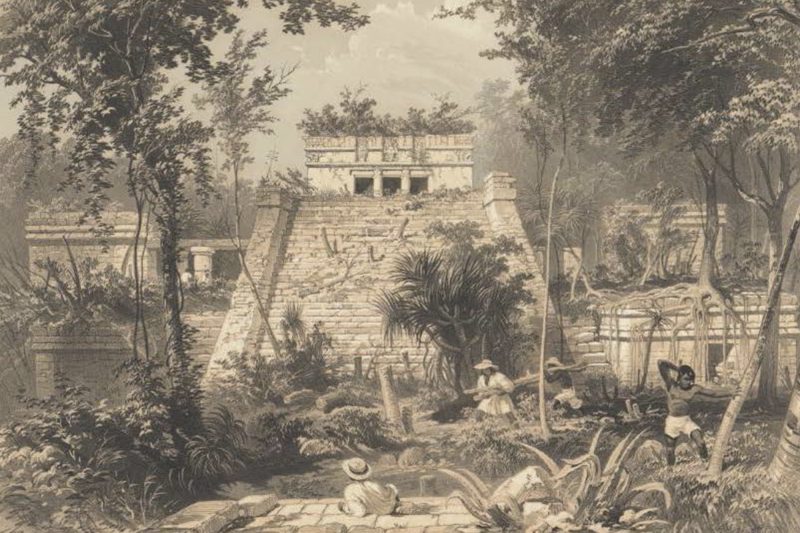
A Mayan Trading Port
With access to land and sea routes, Tulum served as an important port for Mayan trade, especially obsidian. Exports also included honey, copper objects and feathers. They imported ceramics, spices, gold objects, textiles and incense burners as evidenced by artifacts found at the site. According to archeologists, Mayan traders had contacts all over Central Mexico and Central America. Tulum Mayans used seafaring canoes which travelled to rivers such as the Río Motagua and the Río Usumacincta/Pasión system which could be navigated inland thereby accessing highland and lowland trade routes. Mayan canoes were 12-15 meters (40-50 feet) long and constructed from mahogany or other tropical hardwoods. These large canoes revolutionized Mayan trade. Previously they moved only what could be carried on a person’s shoulders. The Mayans did not use wheeled vehicles or beasts of burden, such as ox or horse, since there were none in the area. Without any suitable beasts of burden, there was no compelling reason to use wheeled carts or wagons.
On the sites’ tallest building, El Castillo, a small shrine may have been used as a beacon or lighthouse for incoming canoes. This shrine marks a break in the barrier reef where there is a cove as well as landing beach which makes an ideal port for seafaring canoes.
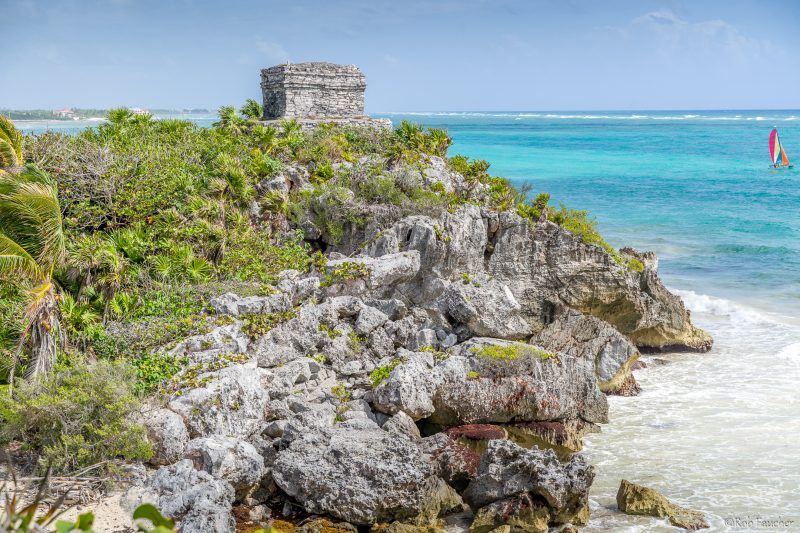
El Castillo
The largest structure in Tulum, El Castillo or the Castle, is a pyramid temple similar to those at other Mayan sites. It was dedicated to the Mayan serpent god Kukulcán. The construction of the Castillo appears to have taken place in stages. It was built on a previous building that was colonnaded with a beam and mortar roof. The lintels in the upper rooms have serpent motifs carved into them. As mentioned above, a small shrine appears to have been used as a beacon for incoming canoes.
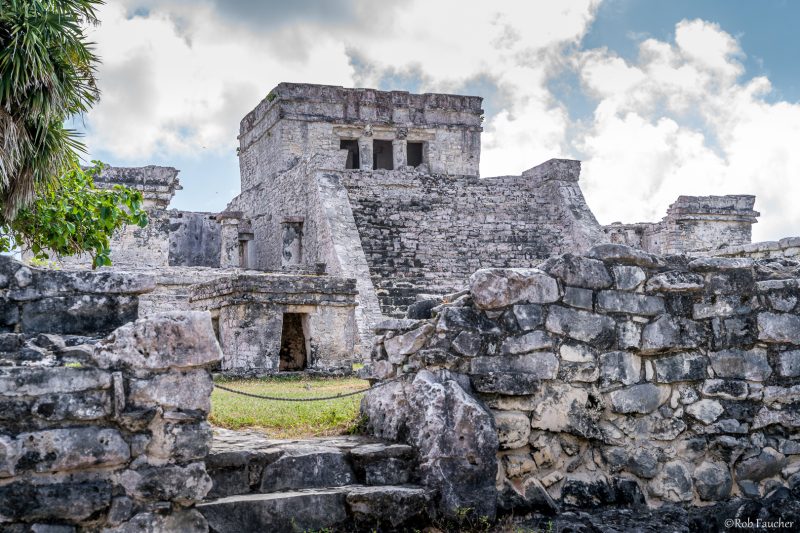
Temple of the Frescoes
Name the Temple of Frescoes because it possesses an intact mural painting in a room on the first floor colored in Mayan blue. As a tourist, you won’t see it as there is no access to the interior of any buildings at Tulum. The building also features a lower gallery and a smaller second story gallery. It was was used as an observatory for tracking the movements of the sun. Note the presence of a descending sun god near the middle of the building’s façade.
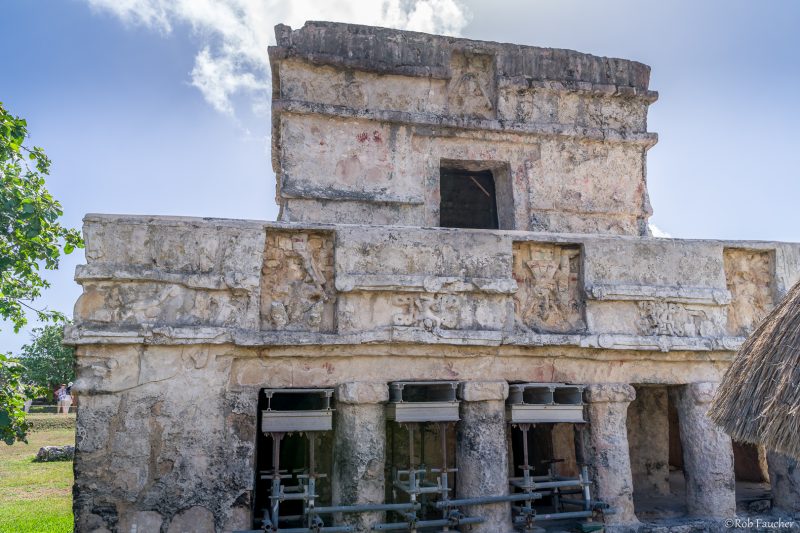
Templo del Dios Descendente (Temple of the Descending God)
On the façade of the Temple of the Descending God is a figure sculpted with its head pointing down, the descending god. Tulum appears to be the center of this god’s cult with more descending god carvings found on other buildings. The interior walls also show traces of the original pigments and paints applied by the Maya.
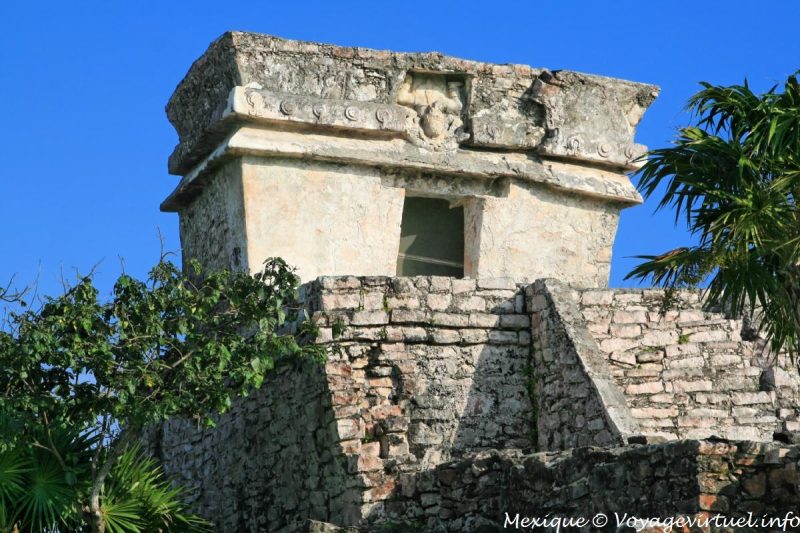
Templo del Dios del Viento (Temple of the Wind Dog)
The Temple of the Wind God is one of the most photographed buildings because of its location right next to blue turquoise Caribbean sea. It features a rounded base in order to resist strong winds coming off the bay. Traditionally the god of the wind, Ehécatl from Central Mexico, was related to the serpent god Kukulcán. There are two watchtowers are located on the west facing wall that hold religious altars.
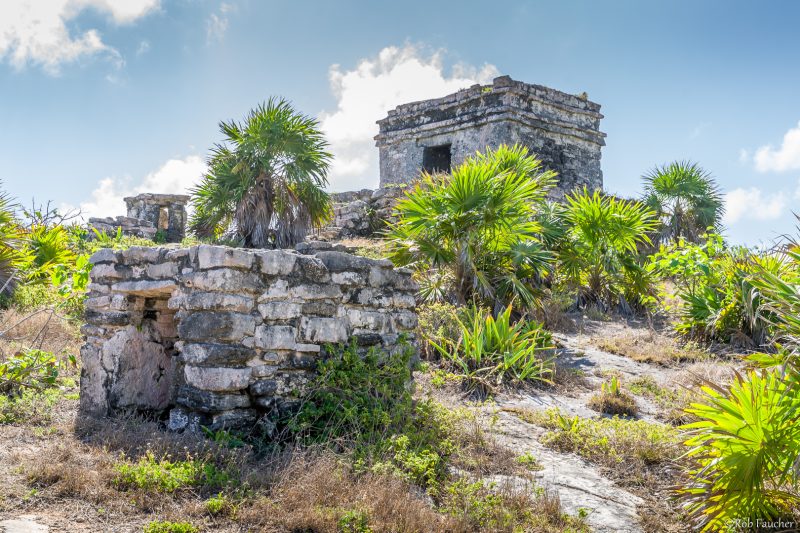
House of the Cenote
Cenotes are water filled sinkholes that occur naturally with limestone rock when an underground cave collapses and exposes the groundwater underneath. In addition to supplying potable water, Mayans believed cenotes to be a gateway to the underworld of Xibalba. This building was built over a cenote, hence the name. Human bones were found inside the building, so it may have been used a crypt or a temple.
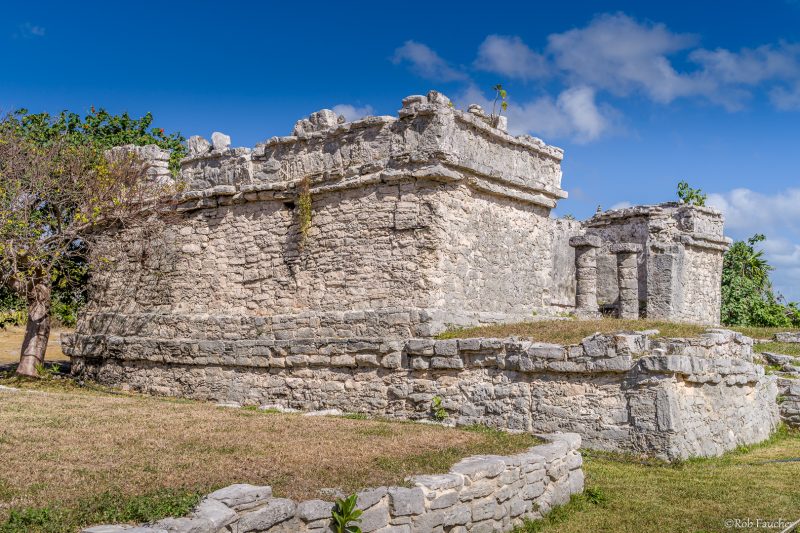
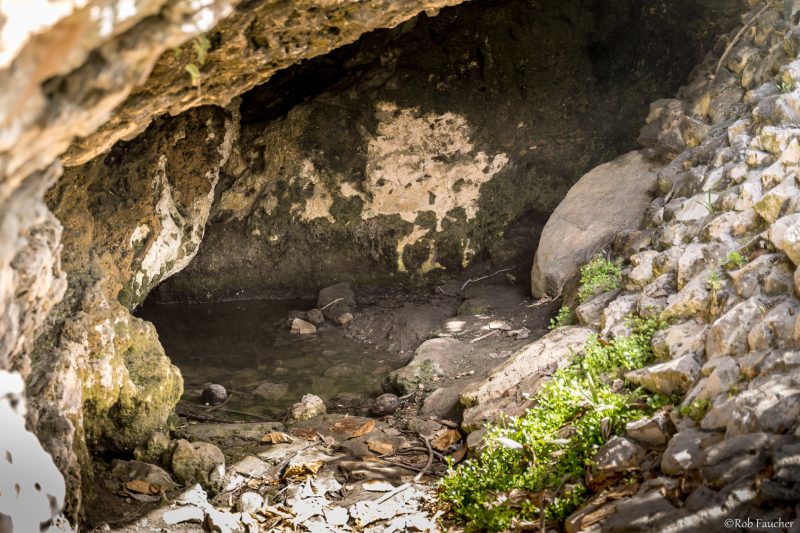
Structure 34
Within the walls of Tulum, buildings are number for archeological purposes. Structure 34 appears to have been an important residential dwelling.
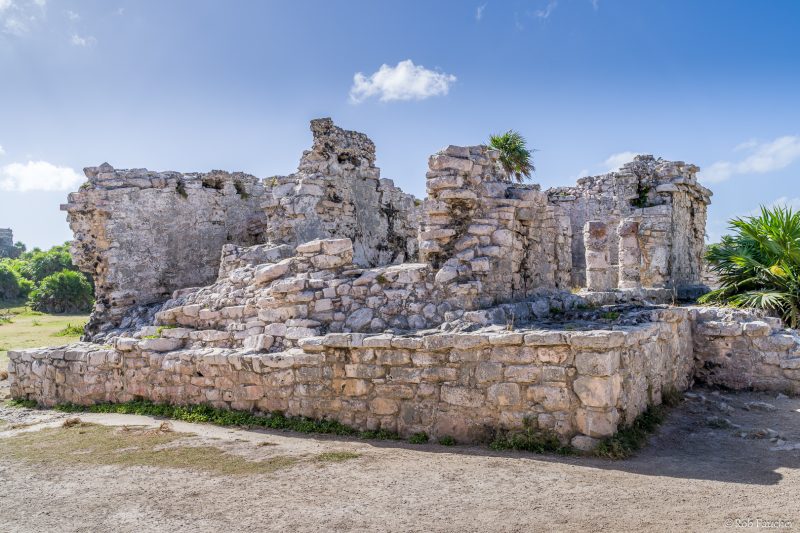
The Great Palace aka The House of Columns
This building most likely served as a residence to the most important inhabitants of Tulum. It consists of various large rooms and a sanctuary covered with roofs supported by columns and beams. The benches around the walls were used as seats and possibly beds. Located at the right side of the building there is a sanctuary for religious ceremonies.
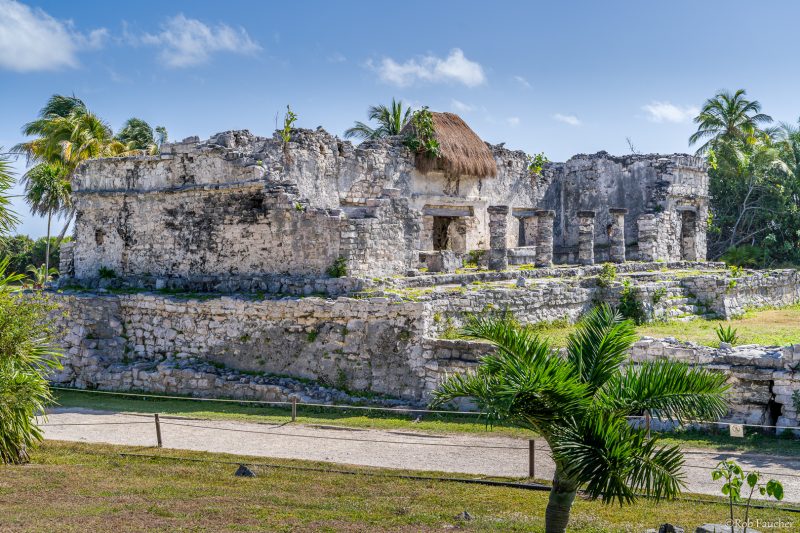

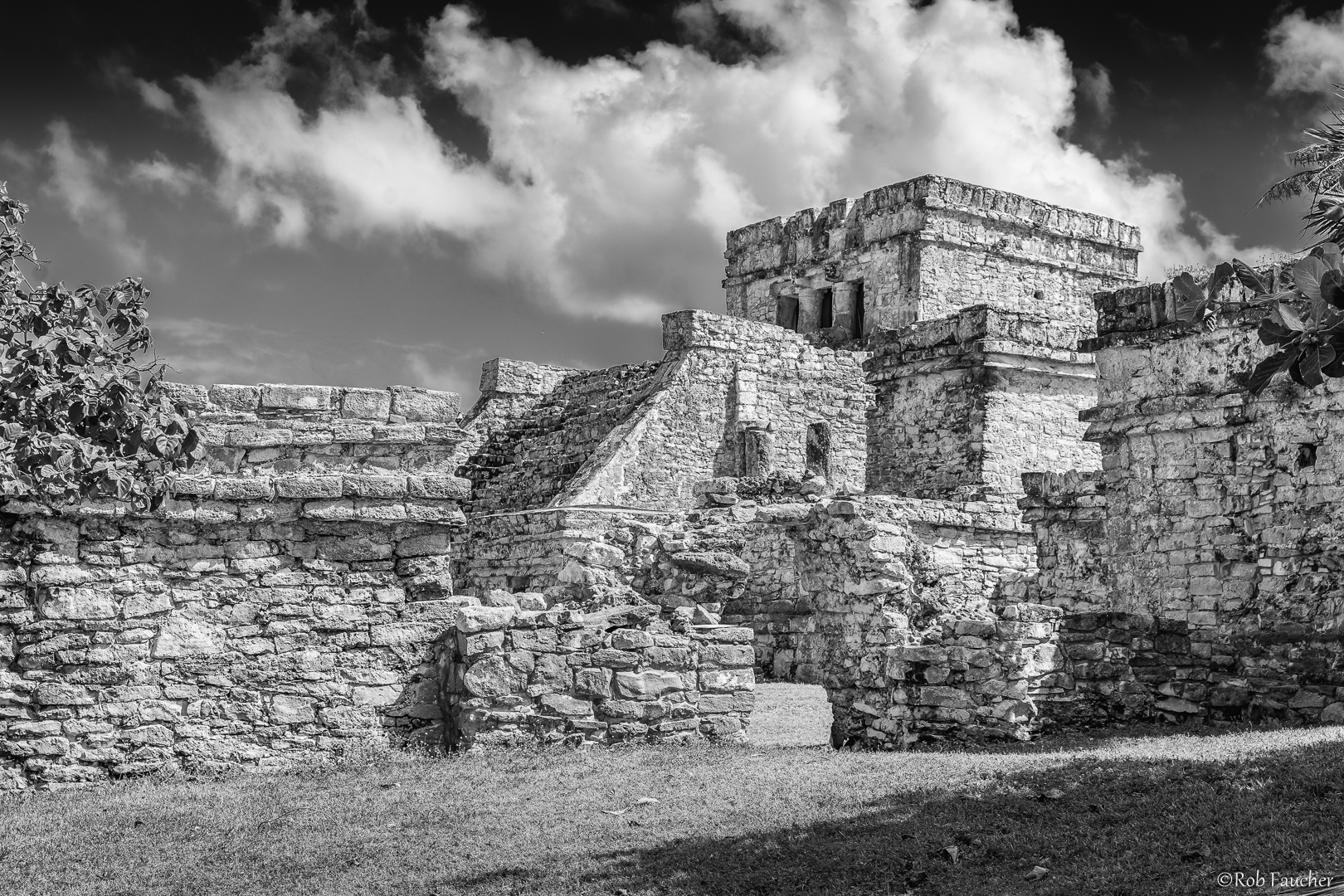
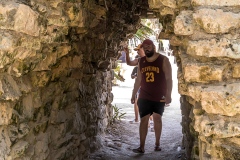
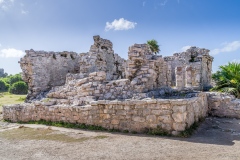
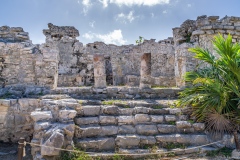
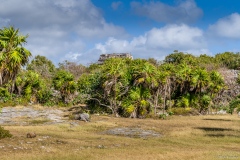
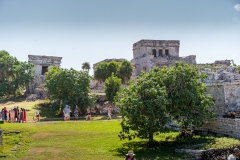
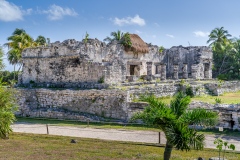
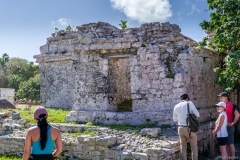
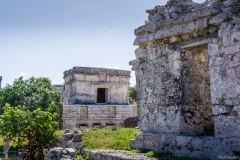
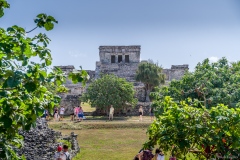
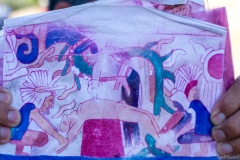
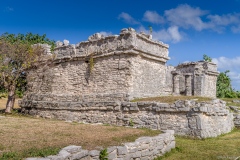
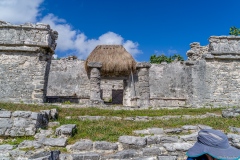
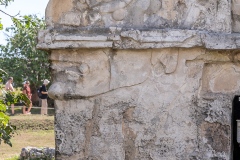
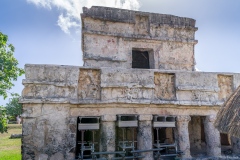
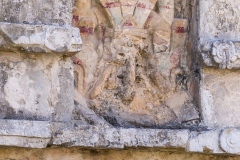
One thought on “Feb 17, 2023 – Tulum Ruins, Mayan Walled City”